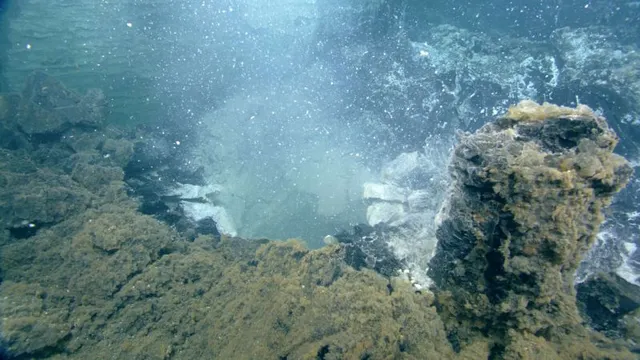
Axial Seamount prepares for imminent eruption as activity increases
2025-05-09 00:00- The Axial Seamount has shown increased seismic activity, with a potential eruption expected before 2025.
- The last eruption in April 2015 resulted in significant magma flow and earthquake activity, primarily affecting marine life.
- Scientists believe that the upcoming eruption will not pose any threat to the Pacific Northwest coastal communities.
Express your sentiment!
Insights
The Axial Seamount, located approximately 300 miles off the coast of Oregon in the Pacific Ocean, is poised for a potential eruption that scientists believe could occur before the end of 2025. This underwater volcano, which lies close to 5,000 feet below the ocean's surface, is among the most active yet lesser-known volcanic sites in the Pacific Northwest. Its last eruption happened in April 2015, during which it emitted roughly 10,000 small-scale earthquakes in just one day, and released magma across the seafloor for about a month. Recent activity observed by researchers indicates that the frequency of seismic events around Axial Seamount has surged, suggesting an increase in magma movement below its crust. The team from the National Science Foundation's Ocean Observatories Initiative Regional Cabled Array, a monitoring facility at the University of Washington, reports that significant inflation of the volcano is evident. However, in the most recent updates, the number of daily earthquakes has decreased from over 1,000 to a few hundred, indicating fluctuations in volcanic activity trends. Scientists are intrigued by the predictability of eruptions at Axial Seamount, the latest getting attention due to its expected timeline and the ecological implications of such eruptions. Remarkably, past eruptions have shown that marine life, even in severe conditions created by volcanic activity, tends to thrive afterward. During the previous eruptions, life around hydrothermal vents exhibited a capacity to recover and flourish quickly after being affected by lava flows. Debbie Kelley, a marine geology professor, asserts these discoveries highlight the critical role of volcanic activity in sustaining oceanic ecosystems. The geographic context adds another layer to the significance of the volcano; it is part of the Pacific Ocean 'Ring of Fire,' known for its high volcanic and seismic activity. While the Axial Seamount lies far from the shoreline and is not directly linked to seismic activities on land, scientists emphasize there is little risk for coastal communities from its impending eruption. Kelley reassures that there will be no major earthquakes or tsunamis triggered by this volcanic activity. In conclusion, as the volcano continues to exhibit signs of impending eruption, researchers remain vigilant in their observations, eager to advance our understanding of these mysterious underwater phenomena.
Contexts
The Pacific Ocean Ring of Fire is a highly active geological region characterized by a significant number of earthquakes and volcanic eruptions. It forms a circle around the Pacific Ocean, stretching approximately 40,000 kilometers (25,000 miles) and is home to about 75% of the world's volcanoes and 90% of the world's earthquakes. This region is primarily formed due to tectonic plate movements, where several tectonic plates converge, diverge, or slide past one another, creating immense pressure that is eventually released through seismic activity or volcanic eruptions. The most notable tectonic plates within this region include the Pacific Plate, North American Plate, Eurasian Plate, Philippine Sea Plate, and the Nazca Plate among others. The continuous interaction of these plates results in heightened geological instability, making the Ring of Fire one of the most seismically active zones on the planet. Geological activity within the Pacific Ocean Ring of Fire not only impacts the immediate physical environment but also poses serious risks to human populations living in the vicinity. Countries such as Indonesia, Japan, the United States (particularly the West Coast), Chile, and the Philippines experience regular seismic events ranging from minor tremors to major earthquakes. Additionally, volcanic eruptions have the potential to cause catastrophic damage, affecting air travel, agriculture, and overall safety for people in these areas. Preparedness and response strategies are crucial in these regions to mitigate the lifethreatening situations that arise from such natural disasters. Monitoring systems, such as seismic sensors and volcanic observation networks, play a key role in predicting and providing warnings for upcoming events, thus potentially saving lives and reducing infrastructure damage. The geological formations and the activity associated with the Ring of Fire also provide essential insights into the Earth's interior processes. Studying the composition of volcanic materials and the characteristics of earthquakes enables scientists to understand plate tectonics better and informs theories related to continental drift and earth evolution. Additionally, geothermal activity in these areas has paved the way for sustainable energy solutions, with geothermal power becoming a viable energy source in several countries. However, the accompanying risks must be carefully balanced with the potential benefits, particularly in terms of energy extraction and land use. In conclusion, the Pacific Ocean Ring of Fire remains a focal point of geological interest due to its complex interplay of tectonic activities. With the looming threat of natural disasters, continuous research, monitoring, and public education are essential to minimize risks to human lives and property. As our understanding of the geodynamics of the Ring of Fire advances, it also opens new avenues for exploration in geothermal energy, providing a path towards sustainable resource exploitation while maintaining safety as a priority.